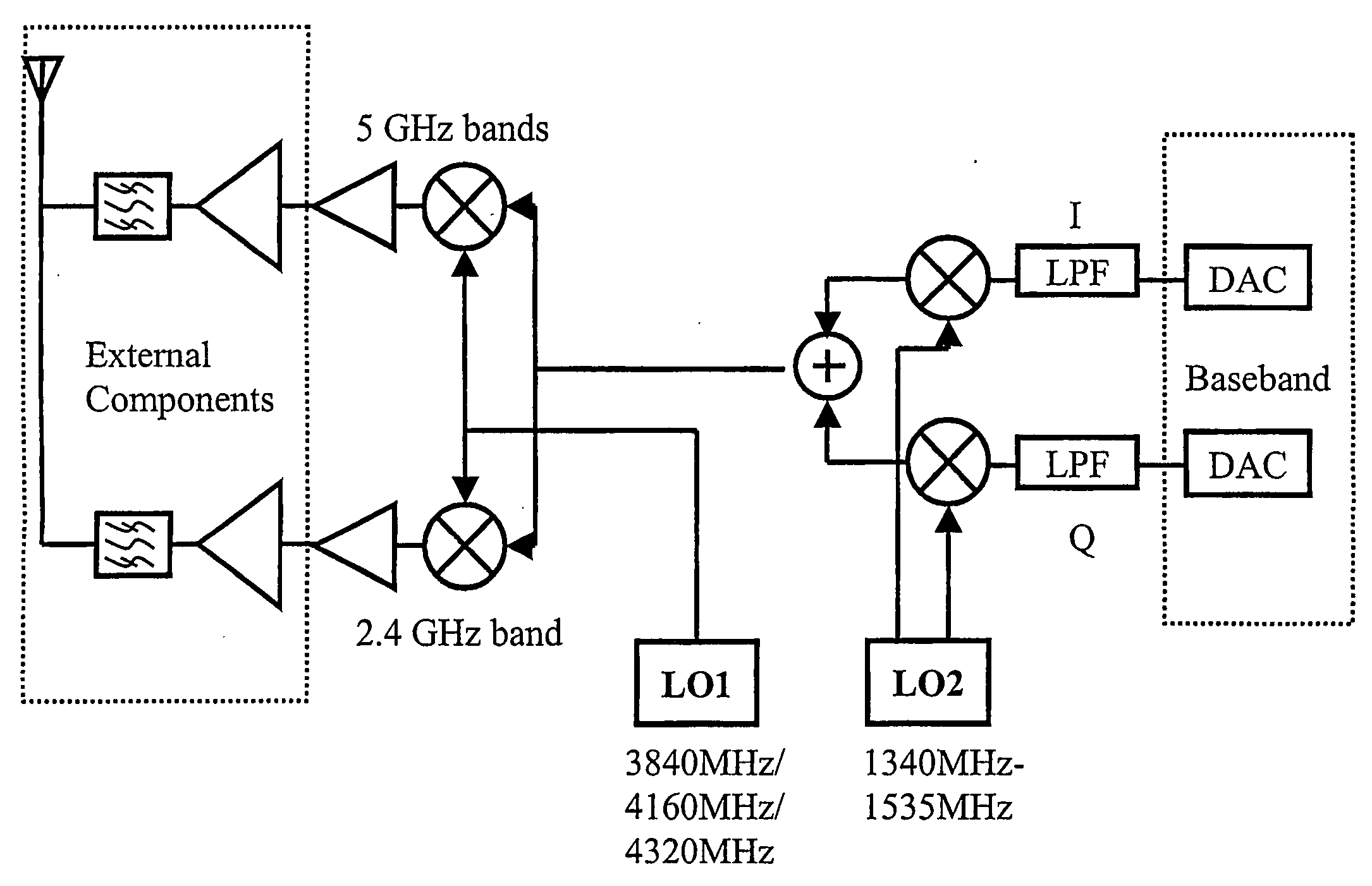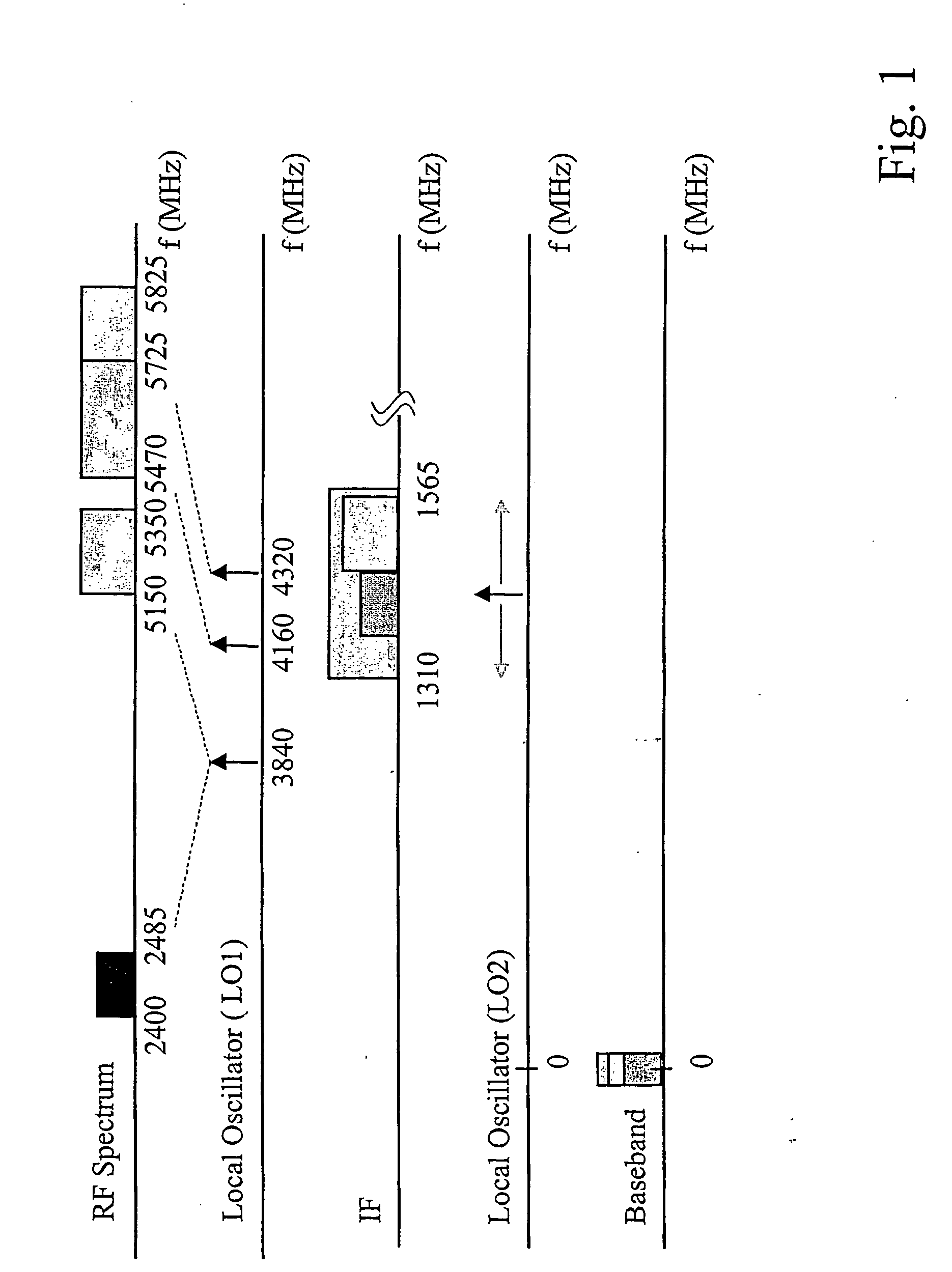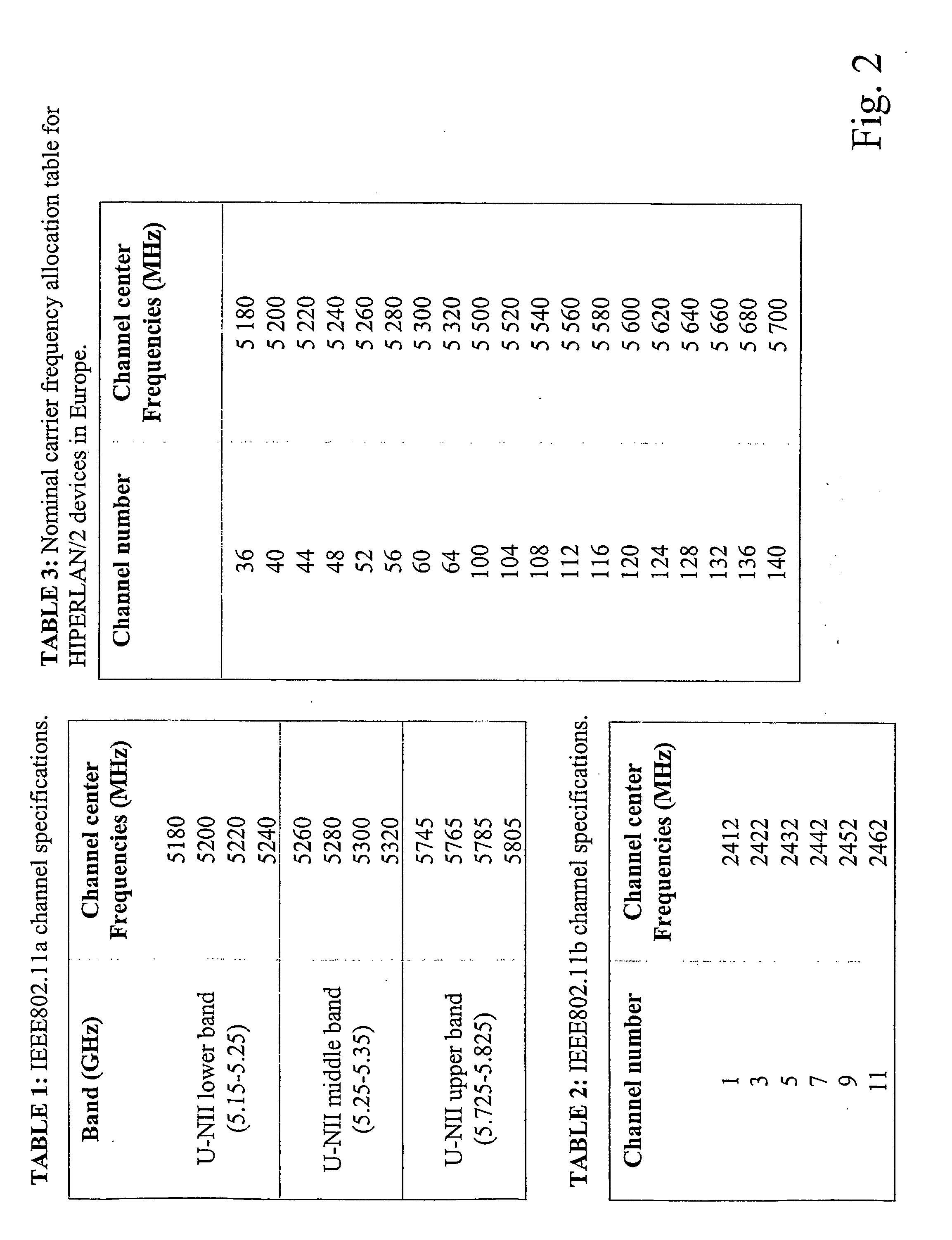Multi standard transceiver architecture for wlan
a transceiver and multi-standard technology, applied in the field of multi-standard transceiver architecture for wlan, can solve the problem of slow data rate for wlan
- Summary
- Abstract
- Description
- Claims
- Application Information
AI Technical Summary
Benefits of technology
Problems solved by technology
Method used
Image
Examples
Embodiment Construction
[0028] The frequency plan is an important aspect of the architecture according to the present invention. A great deal of hardware reuse leading to lower power consumption and smaller die area is achieved by careful frequency planning. The frequency plan according to FIG. 1 is constructed to cover the currently existing RF bands of the standards mentioned above. Thus, according to an embodiment of the transceiver of the present invention there is provided a tri-band architecture, which is summarized in the following. The first local oscillator has three distinct frequencies, 3840 MHz, 4160 MHz and 4320 MHz, to translate channels from the three RF bands to an IF frequency range between 1310 MHz-1565 MHz. The first LO frequency at 3840 MHz translates channels from 2.4 GHz RF band and 5.15-5.35 GHz RF band to the IF band. The second LO frequency at 4160 MHz translates channels from 5500 MHz-5700 MHz RF band to the IF band. The third LO frequency at 4320 MHz translates channels from 5745...
PUM
 Login to View More
Login to View More Abstract
Description
Claims
Application Information
 Login to View More
Login to View More - R&D
- Intellectual Property
- Life Sciences
- Materials
- Tech Scout
- Unparalleled Data Quality
- Higher Quality Content
- 60% Fewer Hallucinations
Browse by: Latest US Patents, China's latest patents, Technical Efficacy Thesaurus, Application Domain, Technology Topic, Popular Technical Reports.
© 2025 PatSnap. All rights reserved.Legal|Privacy policy|Modern Slavery Act Transparency Statement|Sitemap|About US| Contact US: help@patsnap.com



